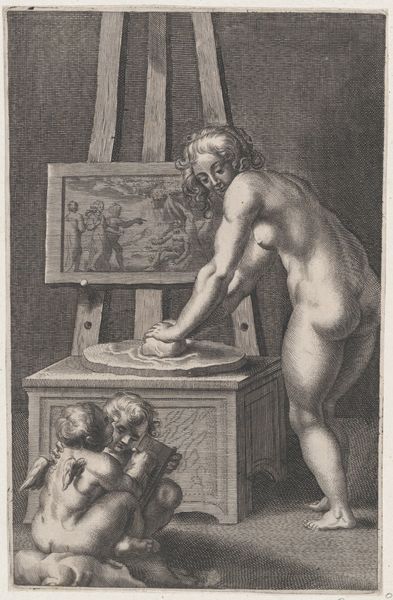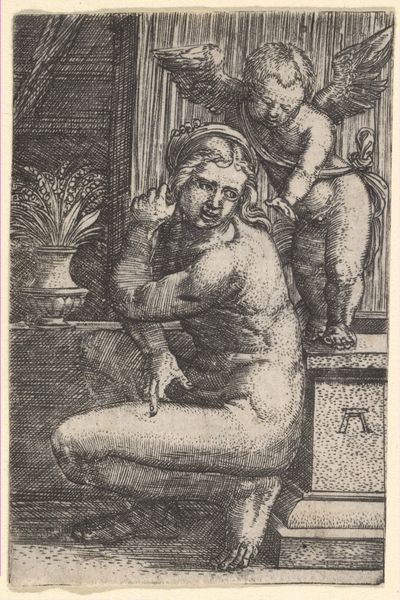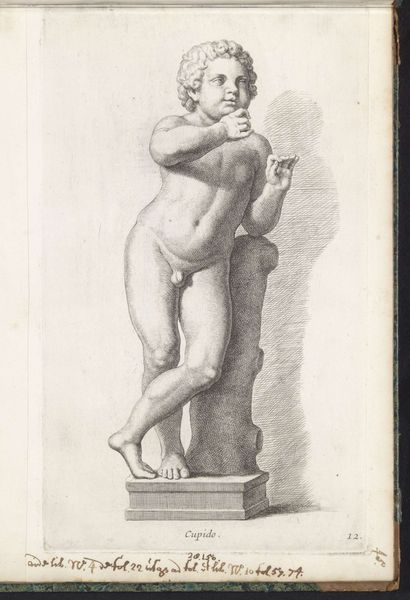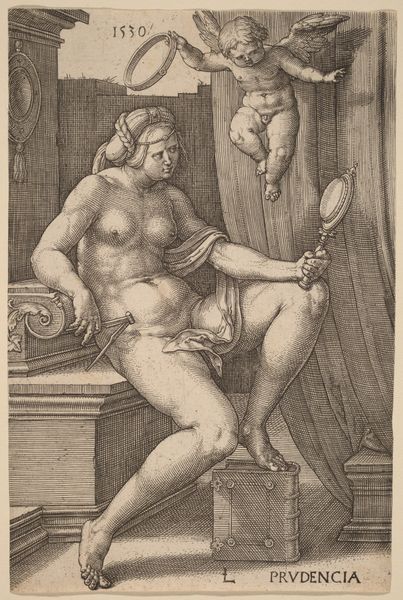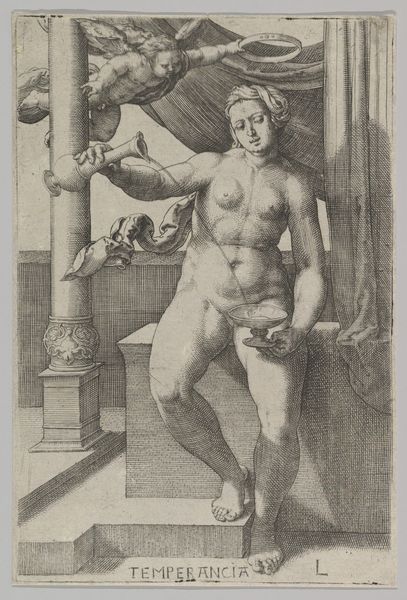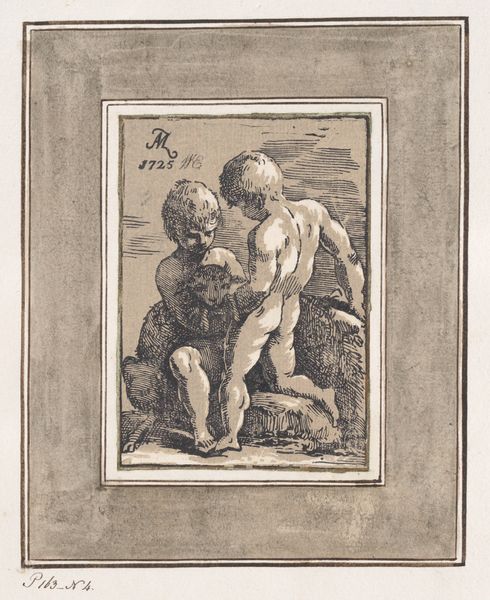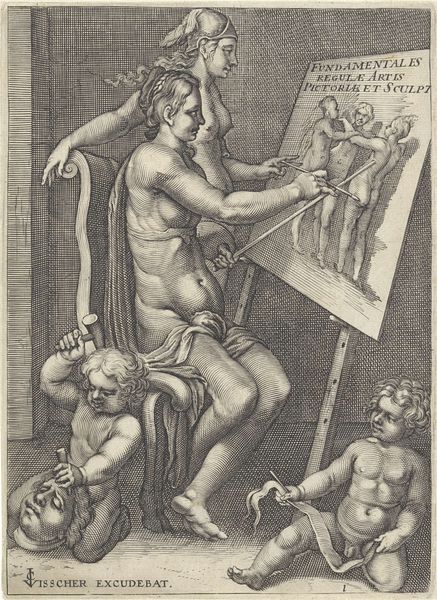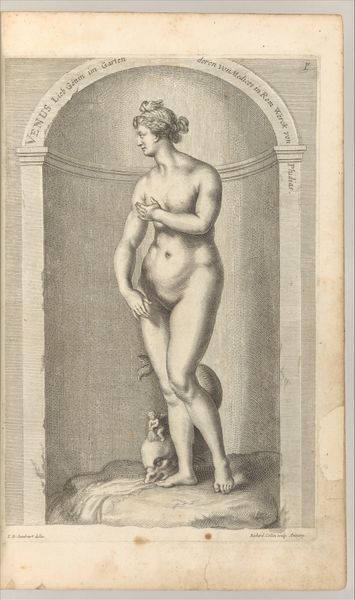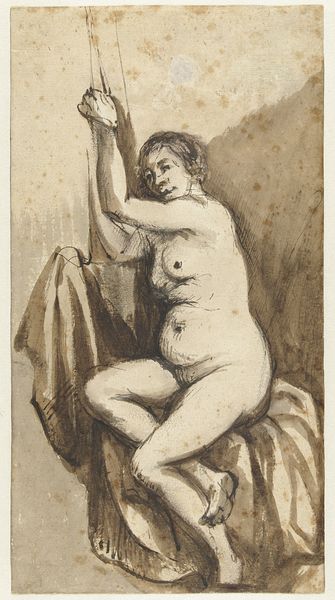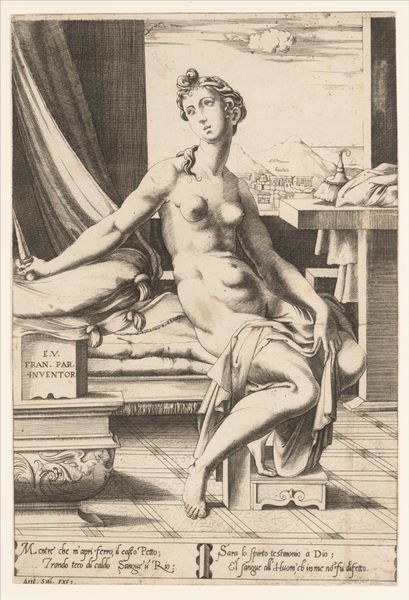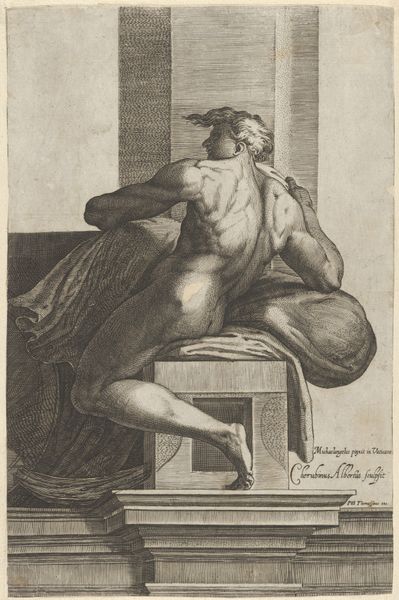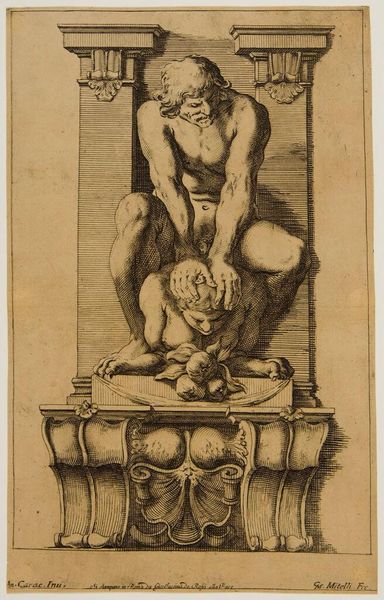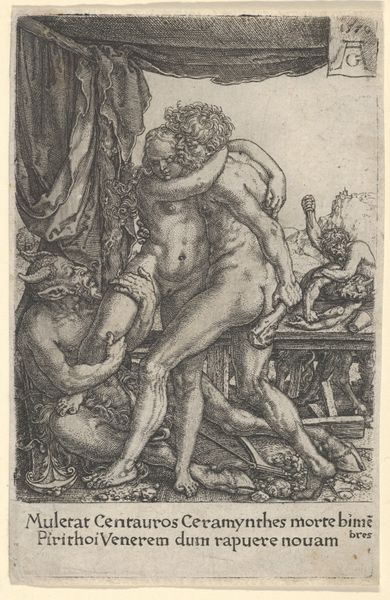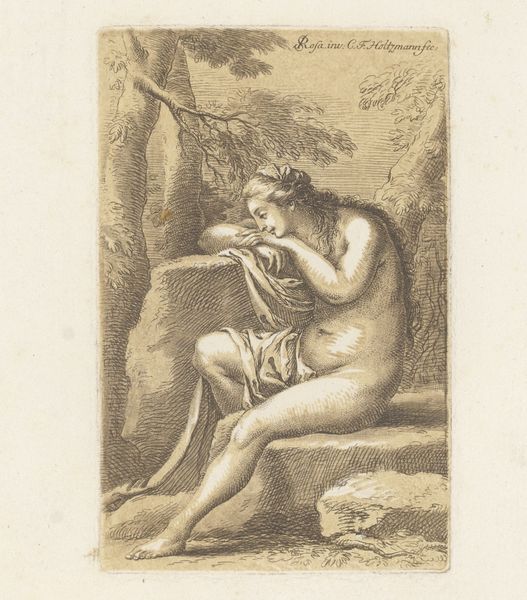
Pictura: allegory of painting, with a nude woman at center grinding pigments, two putti drawing at lower right 1605 - 1650
0:00
0:00
drawing, print, engraving
#
drawing
#
allegory
#
baroque
# print
#
figuration
#
nude
#
engraving
Dimensions: Sheet (Trimmed): 11 1/2 × 7 15/16 in. (29.2 × 20.2 cm)
Copyright: Public Domain
Editor: So, this is *Pictura: allegory of painting*, an engraving by Cornelis Galle I, dating from the early to mid-17th century. The woman is very strong and very focused; the whole piece has a very active feel. What do you see in it? Curator: Well, on the surface, we see a representation of artistic creation itself. But let's think about what’s *not* immediately visible. How does the nakedness of the figure, juxtaposed with the tools of artistic production, speak to power structures of the era, particularly the male gaze and the objectification of women, even when personifying "art" itself? Editor: So it's not *just* about painting, but about how female bodies are seen in the artistic world? Curator: Precisely. Consider also those cherubs drawing. How might we read this image through the lens of labour? She's grinding pigment, they're sketching; an explicit recognition of "work" as integral to the "allegory of painting." It makes one think about visibility, too – whose work is celebrated versus whose labour is obscured. What kind of value does each artist provide? Editor: So, by visually foregrounding both the nude woman's physique and her action, the piece is engaging with debates of body image and what kind of labour is acceptable in that historical moment? Curator: Yes. How can the politics of the gaze influence our interpretation and analysis of such pieces? I wonder too how audiences responded when seeing that artwork 400 years ago. What does the figure *grinding pigment* suggest? The body must engage the artistic enterprise in a material way! Editor: It’s a pretty provocative way to think about image-making! I see the figure is not a goddess, but more real and physical and present in her labor. Thanks; this opened up many new ways to think about this work! Curator: Absolutely. It’s a crucial piece in helping us examine what cultural power, influence and control are brought into play during image-making.
Comments
No comments
Be the first to comment and join the conversation on the ultimate creative platform.
